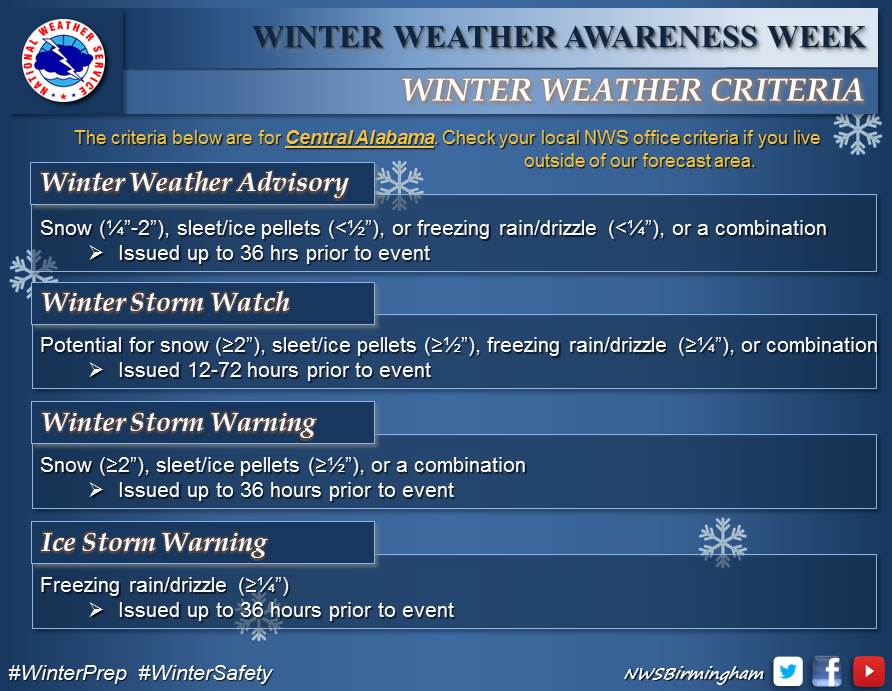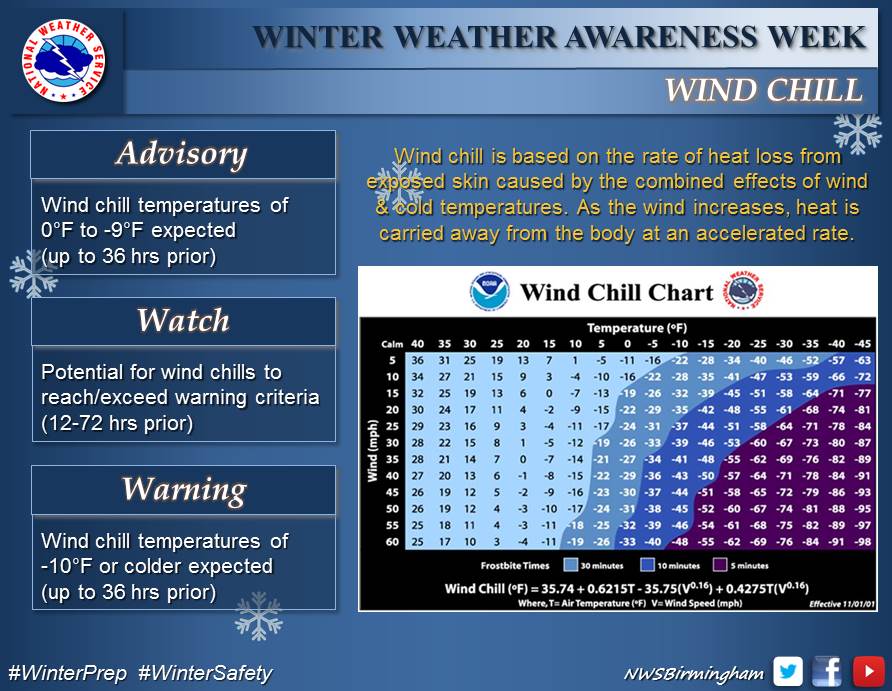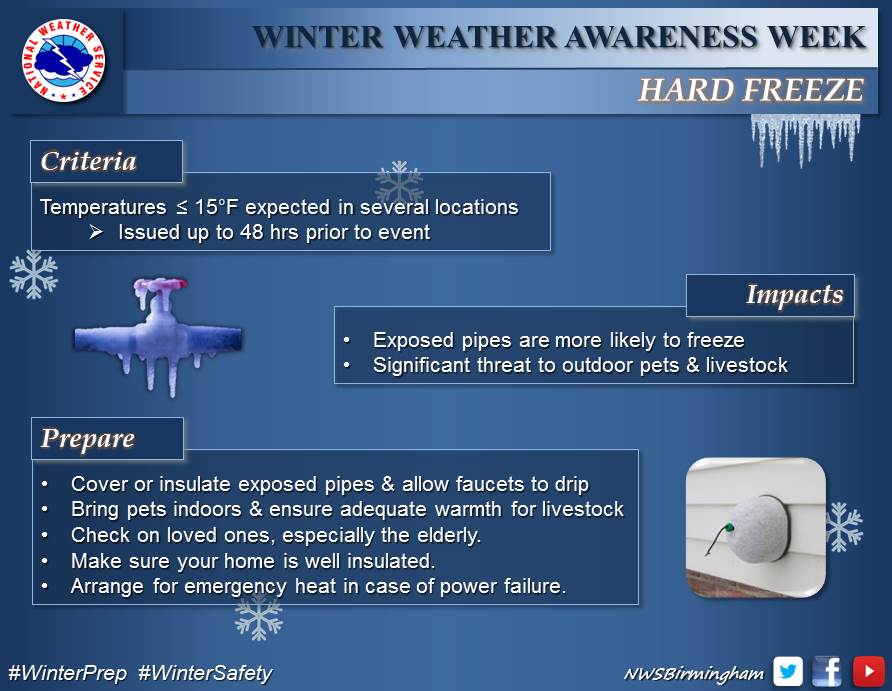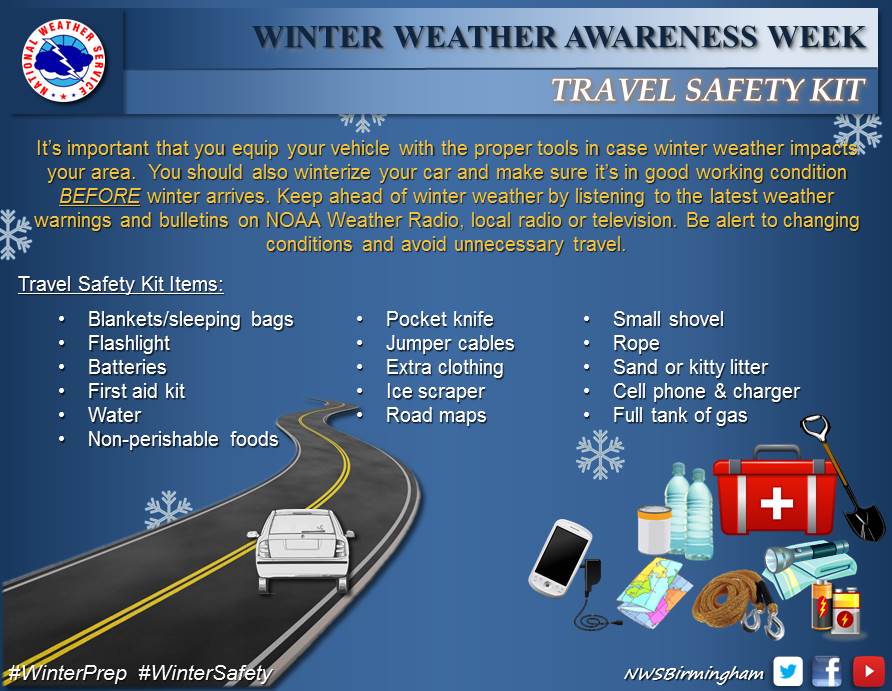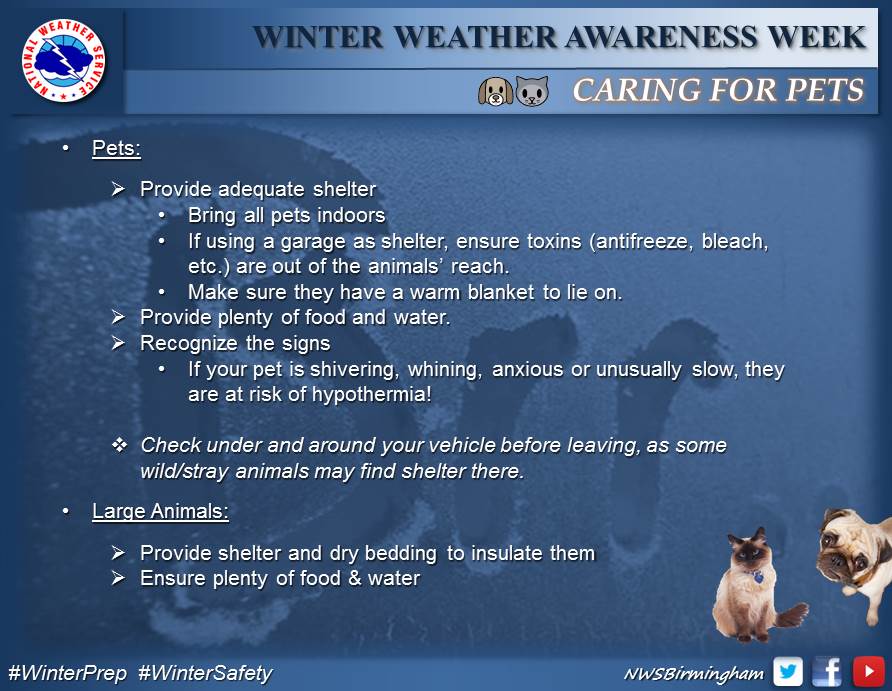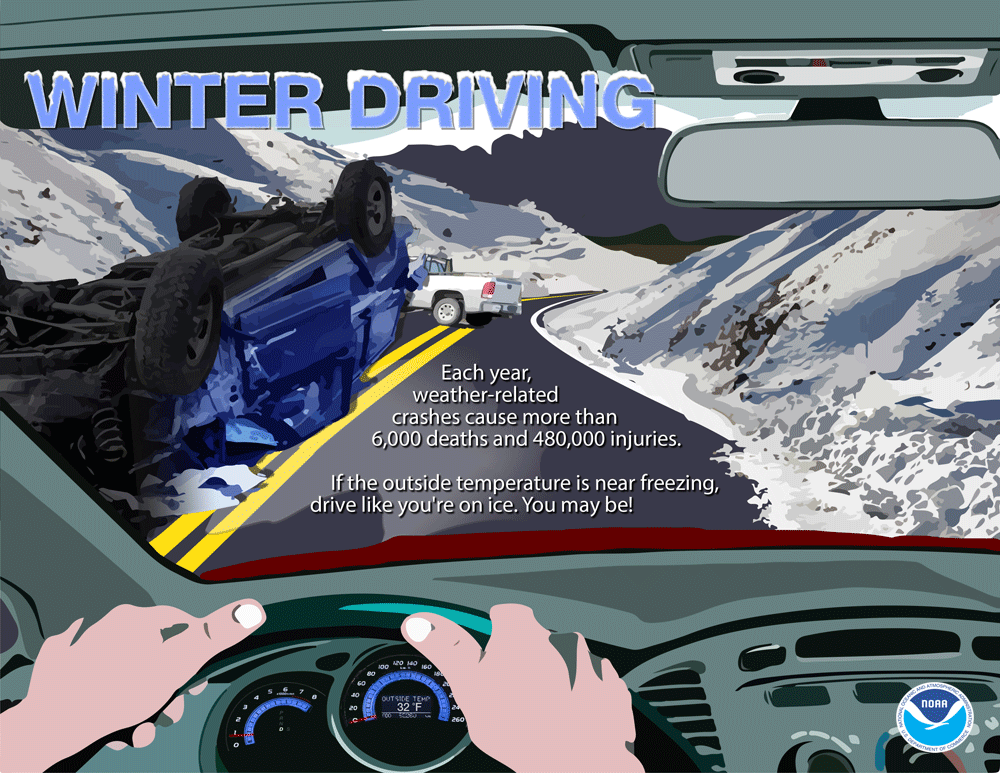| Precipitation Types |
 |
| Winter Weather Products
The following graphics depict local winter weather products and criteria for all counties in Central Alabama served by the National Weather Service in Birmingham, Alabama. |
| Health Hazards
Did you know that prolonged exposure to the cold can become life-threatening? Frostbite and hypothermia are both serious health conditions, and hypothermia can be fatal.
Frostbite – damage to body tissue caused by extreme cold. A wind chill of -20°F will cause frostbite in 30 minutes or less!
- Signs: A loss of feeling and a white/pale appearance in extremities, such as fingers, toes, ear lobes, or the tip of the nose.
- Action: Get medical help immediately! If you must wait for help, slowly rewarm affected areas. However, if the person is also showing signs of hypothermia, warm the body core before the extremities.
Hypothermia – An abnormally low body temperature (<95°F). It can kill!
- Signs: Uncontrollable shivering, memory loss, disorientation, incoherence, slurred speech, drowsiness and apparent exhaustion.
- Action: Seek medical help immediately if the person’s body temperature is below 95°F! If medical care is not available, warm the person slowly, starting with the body core.
|
| Safety & Preparedness
Although it may not happen frequently, Central Alabama does see significant impacts from winter weather. NOW is the time to prepare and finalize your winter preparedness plans. Make sure your NOAA Weather Radio has fresh batteries in it. Make sure you have a means of receiving winter weather information, and be prepared in case you have no way to travel. Injuries and deaths due to winter weather can be prevented through proper winter safety measures
The following graphics cover important safety and preparedness information, whether you are at home or traveling. |
| Past Events
Here are just some of the winter storms to affect the NWS Birmingham forecast area over the years:
- Winter Weather of January 6, 2017: Much of Central Alabama received a mixed bag of wintry weather ranging from freezing rain to sleet to snow. The largest accumulations of sleet and snow occurred mainly near and south the Interstate 20 corridor.
- Winter Storm of February 25, 2015: Many Alabamians experienced one of the largest snow storms on record as over 12 inches of snow were unofficially measured along the Highway 278 corridor in Marion County. In addition, much of the northern two-thirds of the state saw snow during the afternoon and evening hours of the 25th, with totals of 1 – 2 inches near Interstate 20 increasing to 5 – 12 inches further north to the Tennessee state line.
- Winter Storm of February 12-13, 2014: An extremely complex weather system brought a unique double snowfall event to Central Alabama on February 11th and again on February 12-13th, 2014. Ice accumulations of 0.25-0.5 inch were reported in the east/northeast counties, with Cheaha State Park getting hit the hardest. Following the ice, several bands of heavy snow tracked across north Central Alabama dumping 2-7 inches of snow from Birmingham northward.
- Snow & Ice of January 28, 2014: The Gulf Coast and Atlantic Coast states were impacted by a rather significant winter storm during the period of January 28-30, 2014. Snowfall totals across Central Alabama ranged from zero in the far northwest to 2-3 inches in a corridor from Chilton County northeast to Randolph County. Prior to the snowfall, some counties in the southeast half of the state reported up to 0.25 inches of ice accumulation. Sadly, there were nine deaths attributed to accidents that occurred due to the icy road conditions.
- Snowfall of January 17, 2013: A strong cold core upper level low pressure area moving east out of Mississippi, combined with deep Gulf of Mexico moisture led to a quick burst of snow across areas north of I-20. Generally 1-3 inches fell, with locally higher totals of 4-5 inches, which led to very hazardous roadway conditions and numerous traffic accidents.
- Heavy Snow and Ice Event of January 9-10, 2011: Areas north of Interstate 20 were reporting anywhere from 1 to 14 inches of snow with the heaviest totals near the Alabama-Tennessee state line. Ice reports were as high as 0.50 inches in multiple counties south of Interstate 20.
- Christmas Day Snow of 2010: The snowfall blanketed much of northern and central Alabama. Some locations saw the first White Christmas on record, while others just missed out on a White Christmas.
- March 1, 2009 Central Alabama Snow Event: Snow piled up across almost all of central Alabama, with 5+ inches in Lee County.
- January 19, 2008 Central Alabama Heavy Snow: Snow fell across Central Alabama and added up to several inches from Demopolis to Clanton.
- January 28-29, 2005 East Alabama Ice Storm: Ice accumulations of one quarter to one inch caused significant icing and widespread power outages across Randolph and Chambers counties.
- March 12-13, 1993 “Storm of the Century”: A foot of snow blanketed Central Alabama. Strong winds that accompanied the heavy, wet snow downed trees and power lines, leaving many people without power for days. 14 people died across the state with unknown number of people injured. Property damage exceeded 50 million dollars. During the winter storm, the American Red Cross in Alabama sheltered over 12,000 people in 108 facilities and served over 36,000 meals.
- December 22-25, 1989 Severe Cold Outbreak : This outbreak killed five people in Alabama. Low temperatures for two consecutive nights dropped to the 0 to -5 degree range over the northern third of Alabama and into the single digits along the Gulf Coast. Daytime high temperatures reached only into the teens. Brisk northerly winds created wind chills ranging from 0 degrees to 15 degrees below zero across the entire state.
- January 10-18, 1982 Severe Cold Outbreak: One of the most tragic outbreaks of cold weather in Alabama caused the death of 20 people and resulted in at least 300 injuries. 16,000 people were forced into emergency shelters and storm damage totaled 78 million dollars.
|
| Additional Information
Additional information is available through the following brochures and links:
|
|



